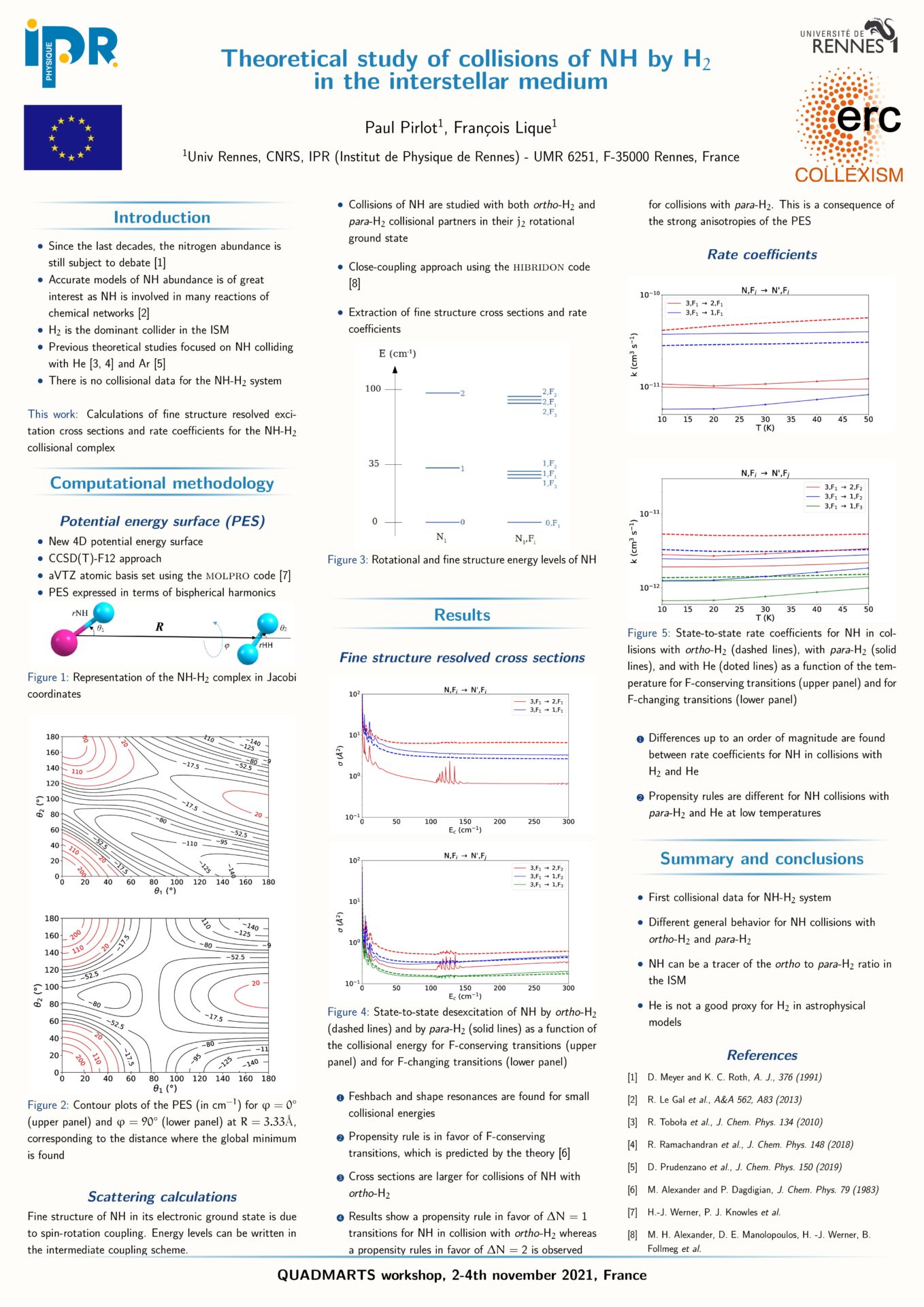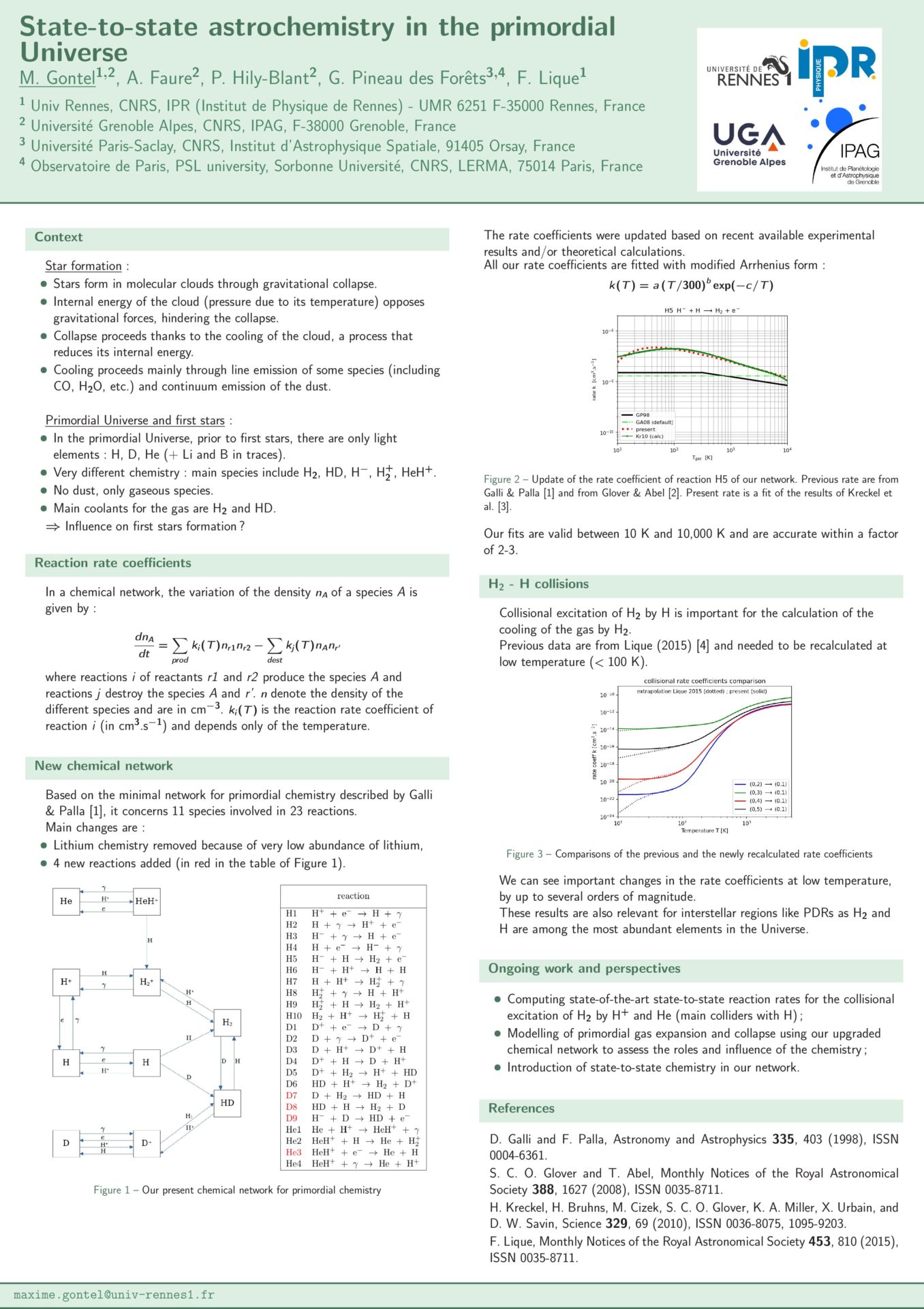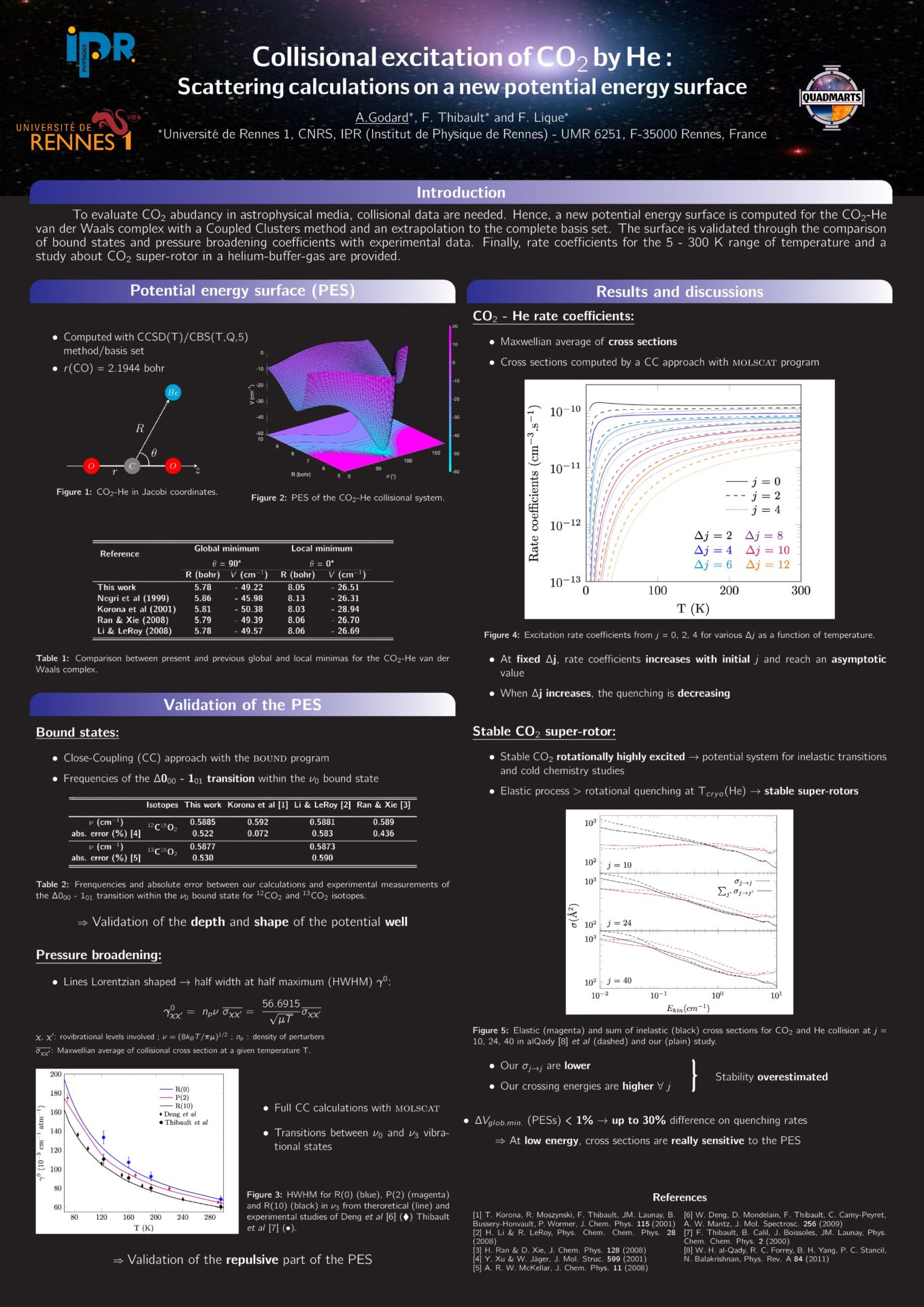by François Lique & Benjamin Desrousseaux & Paul Pirlot Jankowiak & Amélie Godard Palluet & Marie Gueguen & Cheikh Bop & Sándor Demes & Maxime Gontel, on
Presentation of the workshop
The 3rd QUADMARTS workshop from November 2nd to 4th 2021 is taking place in the University of Rennes (France), and the whole team is attending.
QUADMARTS is dedicated to new methods and applications for product determination in elementary reactions and photodissociation processes with applications at low and high temperatures for astrochemistry, atmospheric chemistry and combustion. In the last years, experimental devices as well as theoretical tools have been developed to quantitatively address the issue of product branching ratios under a large variety of physical conditions in the different scientific communities cited above. From an experimental point of view, quantitative information can be obtained by several approaches, including photoionization or electron spectroscopy combined with mass spectrometry, optical spectroscopy and microwave spectroscopy.
B. Desrousseaux co-organized the Young Researcher Session in partnership with M. Drissi. During this session, P. Pirlot Jankowiak and A. Godard Palluet presented their their results in an oral communication.
P. Pirlot Jankowiak, M. Gontel and A. Godard Palluet presented their work in posters (see below).
Theoretical study of collisions of NH by H2 in the interstellar medium - P. Pirlot Jankowiak, Y. N. Kalugina, R. Ramachandran, G. Raffy, P. J. Dagdigian and F. Lique

Despite the increasing number of observations of several nitrogen hydrides molecules (NH, NH2, NH3 ...) in molecular clouds, the nitrogen abundance in the interstellar medium (ISM) is still subject to debate.
Among nitrogen hydrides, the NH radical is of key importance since it is produced from at least two main paths, the dissociative recombination of N2H+ and NH4+. It is then a potential accurate probe of Nitrogen chemical network [1] and accurately modeling the NH abundance in molecular clouds is of great interest. Density conditions in the ISM does not allow maintaining collisional processes large enough to sustain the local thermodynamic equilibrium (LTE) conditions. Hence, the modeling of the observational spectra requires to consider the competition between radiative and collisional processes. In the ISM, H2 is the dominant collider but to the best of our knowledge, there are lack of collisional data for the NH-H2 system.
Calculations of fine structure resolved excitation cross sections and rate coefficients for the NH-He collisional complex will be presented. The collisional data were computed from a new four-dimensional potential energy surface (PES) [2]. Binding energy of the complex was calculated to check the validity of the PES through experimental data as benchmark. Cross sections calculations are performed using the close-coupling approach for NH and with both ortho and para H2 partners. It appears a very different general behavior between the two partners. Calculations implying NH with ortho-H2 show a propensity rule in favor of ΔN = 1 transitions whereas a propensity rule in favor of ΔN = 2 is seen for collisions with para-H2. F-conserving transitions were found to be larger than F-changing transitions. We compare the new NH-para-H2 rate coefficients with previous NH-He data. The new data are expected to improve abundances calculations for astrophysical applications.
New excitation and reaction rate coefficients for modeling the primordial Universe - M. Gontel, A. Faure, F. Lique, P. Hill-Blant and G. Pineau des Forêts
Hydrogen plays a crucial role in the chemistry and the thermodynamics of the primordial universe, prior to the formation of the first stars. H2 and HD, two molecules whose cooling effect is essential in the formation of the first stars and structures, are formed mainly through ionic reactions involving charged species like H2+ , H- or D+. In addition, excitation of H2 by H and H+ plays an important role since it allows ortho-para-H2 conversion, strongly influencing the cooling essential for the star formation.
In this poster, an up-to-date and improved chemical network for primordial chemistry based on previous commonly used networks is presented. It includes the most recent experimental and theoretical results on the rate coefficients of the main reactions and is valid for most of the reactions between 10 K and 10000 K. We will also present new state-to-state data and ongoing work on the collisional excitation of H2 by H, H+ and He. In particular, improve- ments at low temperatures of recently calculated rate coefficients for H2-H will be presented. Our chemical network and collisional data should be of valuable uses, most notably for future simulations of primordial gas evolution.

Collisional excitation of CO2 by He: scattering calculations on a new potential energy surface - A. Godard Palluet, F. Thibault, F. Lique

The CO2-He collisional system is suited for benchmarking new experimental and theoretical methods. Thus, it was well studied during the last decades.
In this talk, I will present our new study of the CO2-He collisional system. A new potential energy surface was calculated at the coupled cluster level of theory with a complete basis set extrapolation. The potential energy surface accuracy was tested through the comparison of bound states and pressure broadening coefficients with experimental data.
Finally, revised collisional rate coeffcients were provided in the 10 - 300 K temperature range. Such data can also be used for the interpretation of astrophysical observations in media where both CO2 and He species are abundant. We expect that these new collisional data will stimulate new experimental studies at low or room temperature.